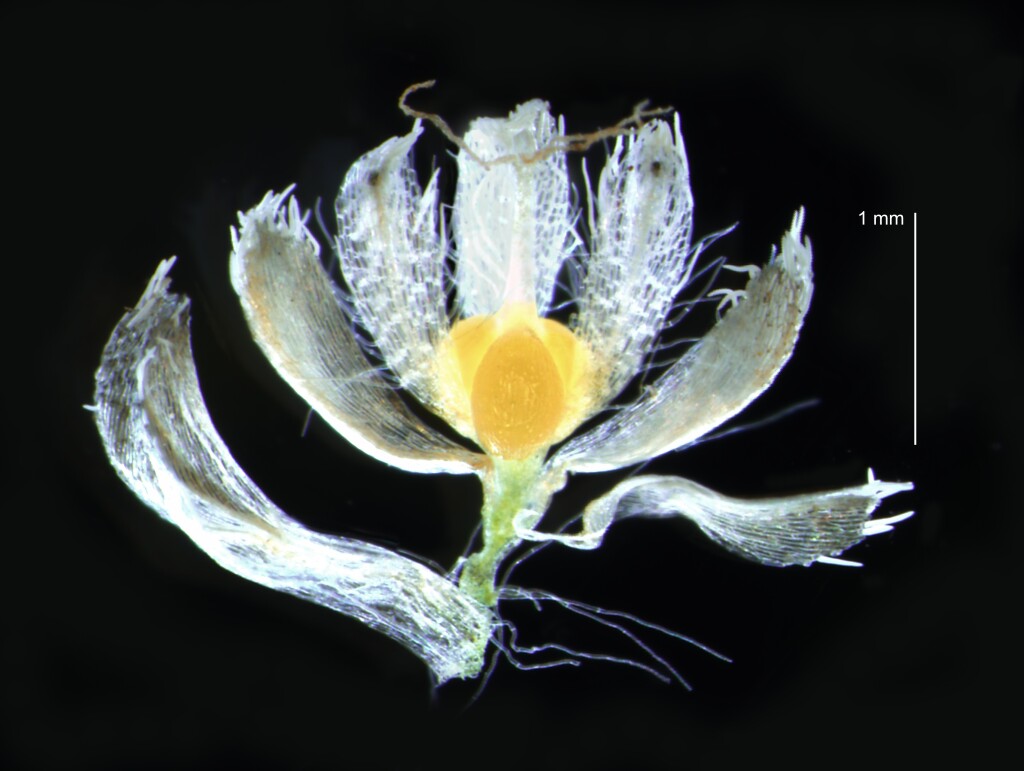Eriocaulon scariosum
Sm. Pale PipewortLeaves 10–80 mm long, 1.5–3 mm wide. Inflorescence hemispherical to globose, 4–6 mm diam., a mixture of male and female flowers, or sometimes predominantly male or female. Bracts with inner surface glabrous; outer bracts obovate, concave, scarious, soon ± concealed on older inflorescences, outer surface glabrous; inner bracts obovate to spathulate, concave, greyish, outer surface with short white hairs on distal abaxial surface. Male and female perianth hairy (as for bracts). Male flowers stipitate; outer perianth lobes 3, one lobe linear, other lobes oblong-spathulate, sometimes connate at margins; inner perianth lobes 3, minute, appressed to stamens. Female flowers with outer perianth lobes 2 or 3, irregular, one linear or absent, other 2 lobes oblong-spathulate, dark brown-black; inner perianth lobes 3, inserted more distally on floral axis, narrowly oblong-spathulate, white, densely hairy on both surfaces. Ovary sessile. Flowers Jan.–Jun.
VVP, VRiv, GipP, Gold, CVU, NIS, HSF, HNF, VAlp. Also Qld, NSW, ACT. Occurs in bog communities, drainage areas, margins of dams etc.
Conn, B.J. (1994). Eriocaulaceae. In: Walsh, N.G.; Entwisle, T.J., Flora of Victoria Vol. 2, Ferns and Allied Plants, Conifers and Monocotyledons, pp. 176–179. Inkata Press, Melbourne.
 Spinning
Spinning

